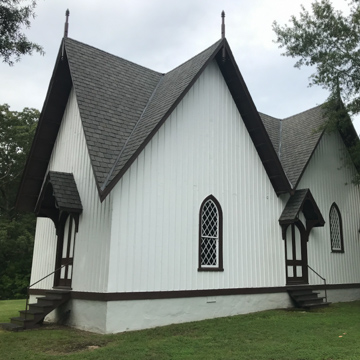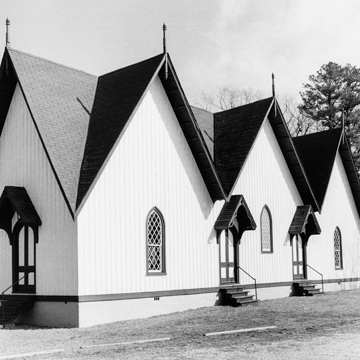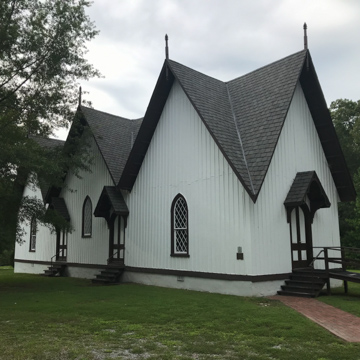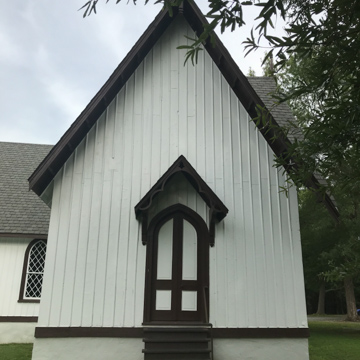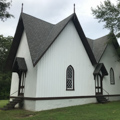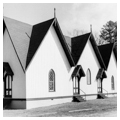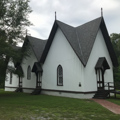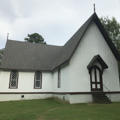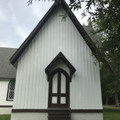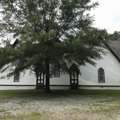Presbyterian minister and Union Theological Seminary professor Dabney designed strikingly stylistic buildings in a county dominated by plain vernacular structures and a few houses with Greek Revival details. For this idiosyncratic Gothic Revival church, he combined contemporary church design with picturesque cottage patterns then little known in Prince Edward County. Exaggeratedly steep roofs with cross gables have exposed rafters carried out and down so far from the walls that the lower points seem nearly to touch the ground. These cover a T-shaped plan focused on a pulpit illuminated by a high window on the facade. The pointed-arched windows have small diamond panes set in conventional sliding sash. The outer skin of vertical boards and battens contrasts with the false stone painted on woodwork inside.
You are here
Briery Church
If SAH Archipedia has been useful to you, please consider supporting it.
SAH Archipedia tells the story of the United States through its buildings, landscapes, and cities. This freely available resource empowers the public with authoritative knowledge that deepens their understanding and appreciation of the built environment. But the Society of Architectural Historians, which created SAH Archipedia with University of Virginia Press, needs your support to maintain the high-caliber research, writing, photography, cartography, editing, design, and programming that make SAH Archipedia a trusted online resource available to all who value the history of place, heritage tourism, and learning.






